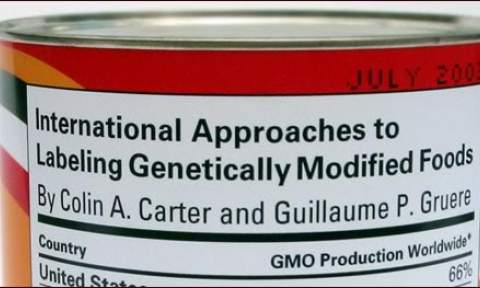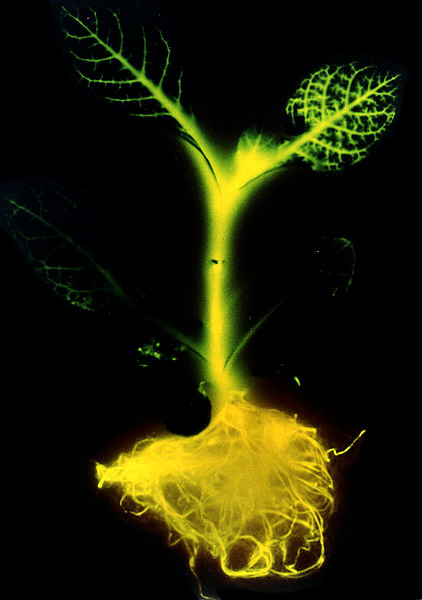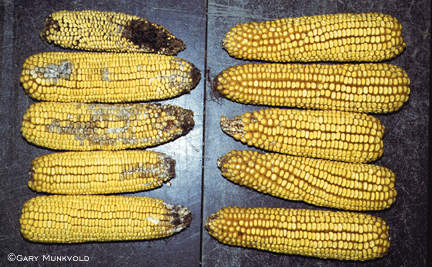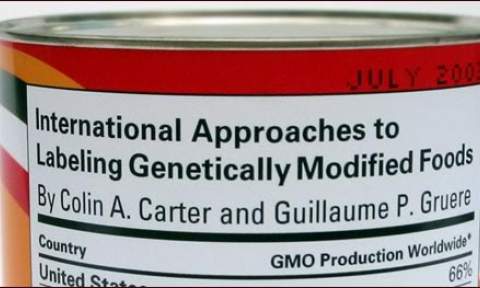GM is not General Motors when you are talking agriculture. It stands for genetically modified. The common term is GMO with the O meaning organism. And today’s farmers particularly in North America are very much into GMO. That’s why one of my readers, a Minnesota-family farm owner and I began a conversation in which the two of us engaged in a frank exchange about GMO. We didn’t agree on everything but what we do concur on is that GMO crops are a part of the North American food chain and have been for quite a long time. And to-date there is no link between any GMO foods or processed food additives that correlate to spikes in cancer or other diseases.
This is not the first time I have written about GMO. You can check out my postings from September 16, September 28, October 1 and October 8, 2012. You may find them helpful in making up your own minds about this controversial subject.
In my conversations over the Internet with my Minnesota friend, a grower with a background in agricultural science, he provided candid answers to my many questions.
Question: Why is GMO in the news right now?
Minnesota Family Farmer: The coming vote on California’s Proposition 37 has something to do with it I’m sure. On my Facebook feed I share information from farm-related organizations who highlight what the scientific mainstream has to say about GMO. Basically, the agricultural community is for the use of GMO plants. Now some would say that is because Monsanto is tainting the waters to promote its products, but agriculture is not controlled by Monsanto, or DuPont, or BASF, or any other multinational company. The farming community is made up of mostly family farms, 97% of the products produced on the farm are from family groups, not from some multinational company, and we are all a bit independent minded enough not to believe what the first snake oil salesman tries to sell us.
I’ve been asked to give my personal opinion and am in favor of the use of GMO plants. I find no smoking gun, or “frankenfood” to cause me concern. I have not always been on the GMO bandwagon, but my early concerns were over the cost to the consumer and the value of GMO products. As time has gone by these products have proven themselves to me and to the agricultural world at large. There is value in producing GMO products. They are safe to use and the world needs them if we want to continue to feed our growing population.
Question: Proposition 37 is about labeling GMO produce. What is your opinion on labeling?
Minnesota Family Farmer: When farmers produce certified organic labeled produce they are held to a much stricter set of regulations than non-organic producers. It means that organic farmers have to limit certain practices to produce what goes to market and they have to have the documentation to prove it. The consumer is assuming that the farm products they are buying that are labeled organic are different from non-organic produce and are willing to pay more for it.
Modern science, however, has yet to prove that there is a physical difference between organic and non-organic products. For the consumer, however, there is an emotional difference and if it makes a difference to you in how your food is produced, great, go for it. I am fully in support of my organic farming friends getting paid more to produce food for you. Just remember, they do a lot more work to produce organic foods and deserve to be paid for that extra work.
I do not, however, find that GMO products need the same labeling as organic produced crops. Why is that? First off, there are so many different kinds of GMO crops and processed food products that it is hard to be sure which have or don’t have GMO in them. For the most part GMO crops have been modified to resist insects, to metabolize certain chemicals or to produce different types of growth in response to different climate and growing conditions. Some modifications are indeed introductions of genes from other organisms, but others are merely a rearrangement or enhancement of the plant’s own genes. Do you paint all of these genetic changes with the same brush?

Question: Why do most GMO fingers point to Monsanto?
Minnesota Family Farmer: Many find GMO offensive because they see it as being forced upon them by Big Agriculture, mainly Monsanto. Yes, Monsanto did produce the first commercially used GMO farm products. But Monsanto is not alone in the GMO field. As far as I know every seed corn and seed soybean company in the U.S. is using GMO methods to meet tomorrow’s needs. Universities are involved and the reason they are is because they can produce new seed varieties so much faster than by older selective breeding methods. This allows them to fine tune their research to develop economically viable products for consumers. For example, the corn and soybean varieties used this year on our farm survived this summer’s drought, perhaps the worst we had experienced in my lifetime, and still produced close to a normal crop. That is a direct result of GMO research leading to drought resistant crops.
Question: If we label GMO food products what should be on the label?
Minnesota Family Farmer: That’s a real problem. Do we place the enhancement of seed production or a better root system in the same category as chemical metabolism? I find a great difference in these genetic manifestations. We need each plant to produce more, and thus a bean that has more seeds in a pod is very desirable from a grower’s perspective. A plant with a better root system produces a crop even in drought conditions. These are needed changes. Do we therefore label them because of how they were developed? With GMO often seen as bad science, much needed genetic enhancements can get lumped in with other GMO modifications. That’s why I say “no” to GMO labeling.
Question: You yourself use the term “frankenfood” when describing how people react to the words “genetically modified organisms.” So why do so many people consider GMO bad science?
Minnesota Family Farmer: Everyone seems to assume that genetic modification is something new but it’s not. We have been modifying plants and animals well before we knew how to move genes around in a cell. We started doing this 10,000 years ago, selectively breeding plants and animals to create better food sources. Over time grain heads became bigger, fruit became tastier, and animals became domesticated. As we modified plants we became part of the equation for keeping them safe and helping them to grow and survive. Modern agriculture is the result. The seeds we sow are dependent upon us. Of all the plants we have modified over thousands of years, corn or maize is most notable. The placement of the grain head had moved to the center of the plant and become much larger. The seeds or kernels have changed in size and shape. We have cross-bred different varieties to improve yields. We have inbred plant lines and created hybrid seeds. Today’s corn cannot survive in the wild. We have created triticale, a hybrid of wheat and rye to improve grain yields. And in producing triticale we have created a sterile plant that must be treated with colchicine to induce reproduction. We have done the same thing with dogs, cats, sheep, goats, camels, cattle and horses. Greyhounds, wolfhounds, dachshunds, bull dogs, poodles, every type of dog you can think of we have bred for a specific task. Yet they come from a common ancestor. We have even crossed different animal species mating horses and donkeys to create mules.
What makes GMO different from other selective breeding technology is methodology. Modern GMO technology began with experiments on modifications to tobacco. Maybe the association with tobacco has had a negative influence on all that has followed. In any case modern GMO tobacco experiments began in 1982 and led to a herbicide-resistant tobacco that was developed and approved in France in 1994. In 1995 the first herbicide-resistant soybean was developed and humans started eating GMO foods. Now many companies and universities are developing GMO technology even further to produce advantageous traits in plants and animals with the same goals as selective breeders have had in their past efforts. I must point out that those who are opposed to eating GMO plant material have unknowingly been eating them for more than 15 years now and to-date there has never been a scientifically proven human health problem traced back to GMO products. In fact, if you look, you will see that all of the health problems that are blamed on GMO food products began well before GMO food products entered the market.

Question: Tell me about your farm. How large is it? What do you grow?
Minnesota Family Farmer: Dad and I farm about 750 acres in Southwestern Minnesota. At one time we got half of our income from hogs but now are only crop farmers. According to university data we should be farming 2,000 acres to earn a decent living but are happy with what we have. In our area we are considered small farmers. My mother has never worked off of the farm, and my wife is recently retired after teaching kindergarten.
When the first GMO crops came to the farm we called them Roundup Ready Soybeans. They were soybean plants that had been bred to withstand being sprayed with the Monsanto herbicide, Roundup, otherwise known a glyphosate. We had been using Roundup to spot spray weeds in soybeans for many years. Soybeans displayed a tolerance to low doses of Roundup already but adding a Roundup Ready gene allowed us to spray an entire field and kill off only the weeds. Some broad-leaf weeds needed more Roundup than others, but grasses died fast. I was a bit slow to jump on the Roundup Ready bandwagon. Yes, Roundup killed weeds better than anything else available at the time, but we didn’t see increased yields in the first few years. Later as Roundup Ready Soybeans got better and Roundup Ready Corn was introduced it was easier to move to an all glyphosate program. From the very beginning, Monsanto told us not to use Roundup solely. They had also noted that some weeds were harder to kill with Roundup. Monsanto added different types of additives to make glyphosate work better but they kept advising us that if we only used glyphosate we would be seeing weeds that would adjust and would no longer be killed by the herbicide. Now Monsanto has discovered that if you move the glyphosate tolerance gene to a different place on the DNA of a soybean plant it increases crop yields. Adding more bushels to the acre makes Roundup Ready 2 Yield Soybeans far more attractive.
Glyphosate kills grasses and corn is a form of grass. So creating a glyphosate-tolerant corn is a major alteration to the plant. But even more importantly, we have seen other GMO changes to corn and several other crops giving them the means to produce their own insecticide. That’s what Bt corn is all about. Bt is a common abbreviation for a naturally occurring bacteria Bacillus thuringiensis that can be found in the soil. A unique feature of this bacterium is its production of crystal-like proteins that selectively kill specific groups of insects. These crystal proteins are poisonous to insects that eat the plants. Bt insecticides have been used for over 60 years and have been considered safe to non-target organisms. As a natural product, however, Bt insecticides have to be kept in controlled environments and have a short shelf life. But Bt corn has dramatically improved yields. Problems have occurred with Bt corn with some insects becoming immune. The solution, however, is quite simple. Farmers can alter what they plant to eliminate the problem.
We, as farmers, recognize the advantages to planting some types of GMO crops. But we also recognize that GMO should be used in moderation because nature, over time, always figures out a way around any defense we develop. Many farm folk have learned that too much of a good thing may be bad in the long run. It is all part of the cycle of nature. If there is a lot of one thing, something else will figure out a way to use it. No modification of a plant or animal is without risk.

Question: Isn’t creating plants with inherent insecticide built in a potential hazard to good insects?
Minnesota Family Farmer: I have looked at all of the data on Bt corn from University of Wisconsin and the science points to very positive results. After all the EPA studied 20 years of human and animal safety data before registering Bt corn. What they found out was that Bt proteins were not toxic to people, domestic animals, fish, or wildlife; and they they had no impact on the environment. Bt crystal proteins were highly selective in killing the larvae of specific moths, corn borers. Bt corn, however, did not affect beneficial insects including honey bees, lady beetles, green lacewing larvae, spiders, pirate bugs or parasitic wasps.
So there you have it, that is the science of Bt genetics. By manipulating the plant’s genetics we can have it produce its own organic insecticide, a GMO product that has had over 20 years of trials before being placed in food crop plants. Since then it has been used for more than a decade. Yes, insects will develop a resistance to Bt. That is natural. These will not be super bugs and we will have other methods available to us to help contain these survivors.
Question: So what do you as a grower say to consumers about GMO?
Minnesota Family Farmer: So many people are afraid that we who grow GMO crops are unleashing a Frankenstein Monster on an unsuspecting public. But this is not the case. We are not a plot in a horror movie. We are working with our scientific community to try to produce more food to feed the population of the planet which includes our children, and we are trying to do it safely. I’ll leave you with a final example. Recently scientists have discovered a way to genetically modify bean plants to enhance root growth. The end benefit is more beans per pod. This is GMO but there is no exotic DNA, no transgenic component. Is this a problem or a benefit? I leave it to the consumer to decide. And finally as a farmer who has grandchildren of my own, please don’t stop science from creating beneficial changes in plants and animals because of some fear monger nightmare. We live in era of genetic engineering and the potential benefits are exciting.
Final Note
To engage Minnesota Family Farmer on GMO and other agricultural topics click on the link provided here.
















